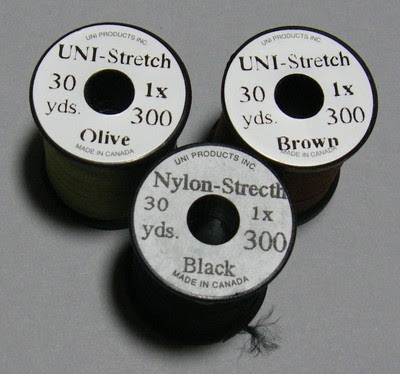I found this tip while surfing on the world wide web, so its not my idea and lay no claims to it!
Uni-Stretch/Nylon-Stretch comes spooled on the standard sized bobbins and costs about $1 for 30 yards.
The alternative I found during that surfing trip is a product called "Wooly Nylon" and costs about $3 for 1000 meter bobbins or $3 for 1093.61 yards (I'll let you do the math). "Woolly Nylon" is used in the garment industry for rolled hems and edges, ruffles, swimwear, aerobic wear, kids clothes, knits and lingerie.
This material works great for
Caddis Larva
Streamer Bodies
Soft Hackles
This material can be used for an under body filler to build up fatter fly bodies.
You can use your favorite marker and on the thread itself or after the body has been wrapped. The caddis larva was coated with an apple green Sharpie marker, followed by a coat of bug bond and the sally hansens
Not everybody is going to use this material or even use Uni-Stretch/Nylon-Stretch but at least there alternatives to use.
One more alternative is a tread called "Bulky Nylon" which is approximately the same as "Wooly Nylon" but slightly thinner. "Bulky Nylon" can be purchased at Joann Fabrics stores. This product also is 1000 meters long and comes in a rainbow of colors.
One more alternative is a tread called "Bulky Nylon" which is approximately the same as "Wooly Nylon" but slightly thinner. "Bulky Nylon" can be purchased at Joann Fabrics stores. This product also is 1000 meters long and comes in a rainbow of colors.
Wolly Nylon was bought on amazon.com
Thanks for looking















